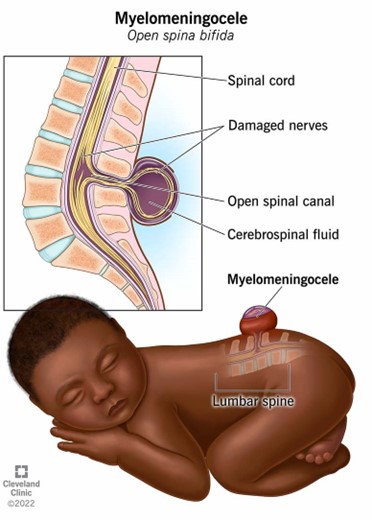A nurse is caring for a 3-year-old child who has had 160 mL of urine output over the past 8-hour period.
The child weighs 33 lb.
Which of the following actions should the nurse take?
Notify the provider.
Continue to monitor the client.
Perform a bladder scan at the bedside.
Provide oral rehydration fluids.
The Correct Answer is B
Normal urine output for a child is 1-2 ml/kg/hr.
The child weighs 33 lb (15 kg), so their expected urine output over an 8-hour period would be between 120 mL and 240 mL.
The child’s urine output of 160 mL falls within this range.
Choice A, Notifying the provider, is not necessary because the child’s urine output
is within the normal range.
Choice C, Perform a bladder scan at the bedside, is not necessary because there is no indication of urinary retention.
Choice D, Providing oral rehydration fluids, is not necessary because the child’s urine output is within the normal range.
Nursing Test Bank
Naxlex Comprehensive Predictor Exams
Related Questions
Correct Answer is A
Explanation
A.Infants with spina bifida, including those with myelomeningocele, have an increased risk of rectal anomalies, so avoiding rectal temperatures is essential. The correct and safe method of temperature measurement for these infants is typically axillary.
B. Placing the infant in a side-lying positionis not recommended for a child with myelomeningocele. The preferred position isprone to avoid pressure on the sac and reduce the risk of rupture and infection.
C.Maintains a dry dressing over the sac: While the sac should be kept covered, it is typically kept moist with sterile saline-soaked gauze to prevent it from drying out and to minimize the risk of infection.
D.Performs range of motion on the infant's hips: Range of motion exercises might be indicated later on, but initially, the focus is on protecting the sac and preventing complications.

Correct Answer is A
Explanation
Choice A rationale: Yellow nasal discharge in a toddler with acute nephrotic syndrome signifies a potential upper respiratory tract infection, which is critically important. Children with nephrotic syndrome are highly susceptible to infections due to significant urinary loss of immunoglobulins, leading to an immunocompromised state. Furthermore, corticosteroid treatments, often prescribed for nephrotic syndrome, suppress the immune system. An infection can precipitate a relapse of the syndrome, lead to severe complications like peritonitis or sepsis, and requires prompt evaluation and potentially antibiotic therapy to prevent life-threatening outcomes.
Choice B rationale: Poor appetite is a non-specific symptom in toddlers with nephrotic syndrome and does not typically indicate an immediate, life-threatening complication. It can be attributed to generalized malaise, abdominal discomfort due to ascites, or even side effects of medications such as corticosteroids. While important to monitor for nutritional status and overall well-being, it does not carry the same urgency as signs of infection, which can rapidly lead to severe health deterioration in an immunocompromised child.
Choice C rationale: Facial edema is a cardinal clinical manifestation of acute nephrotic syndrome, resulting from profound hypoalbuminemia. Reduced plasma oncotic pressure causes fluid to shift from the intravascular space into the interstitial space, leading to generalized edema, often prominently in the face. This finding is expected and indicates the disease process itself, rather than an acute, unexpected complication requiring immediate reporting, unless there is a sudden, significant worsening or associated respiratory compromise.
Choice D rationale: Irritability in a toddler can be a manifestation of general discomfort, illness, or even a side effect of corticosteroid therapy, which can cause mood disturbances and behavioral changes. While it warrants assessment to identify the underlying cause, irritability is a non-specific symptom and does not directly indicate an urgent, life-threatening complication of nephrotic syndrome requiring immediate medical intervention, unlike the signs of an acute infection in an immunocompromised child.
Whether you are a student looking to ace your exams or a practicing nurse seeking to enhance your expertise , our nursing education contents will empower you with the confidence and competence to make a difference in the lives of patients and become a respected leader in the healthcare field.
Visit Naxlex, invest in your future and unlock endless possibilities with our unparalleled nursing education contents today
Report Wrong Answer on the Current Question
Do you disagree with the answer? If yes, what is your expected answer? Explain.
Kindly be descriptive with the issue you are facing.
